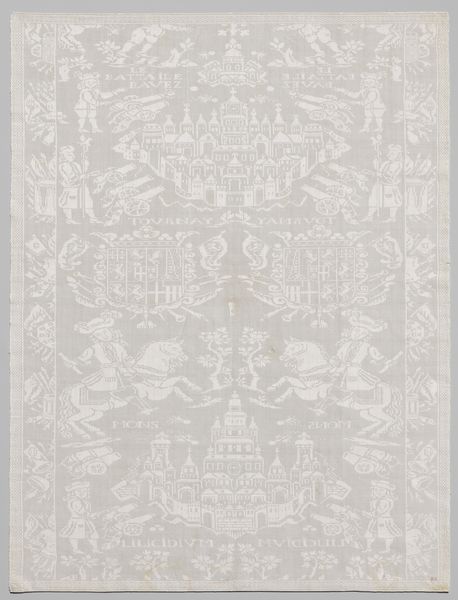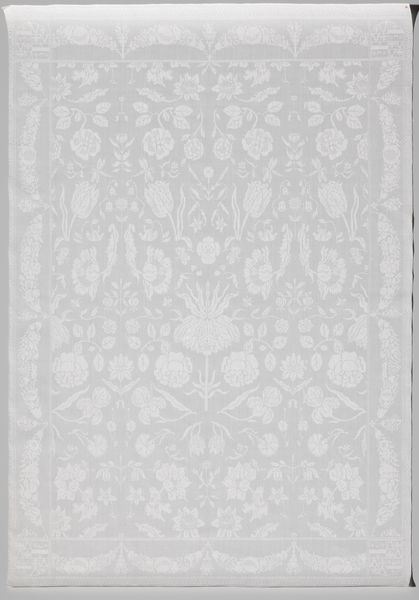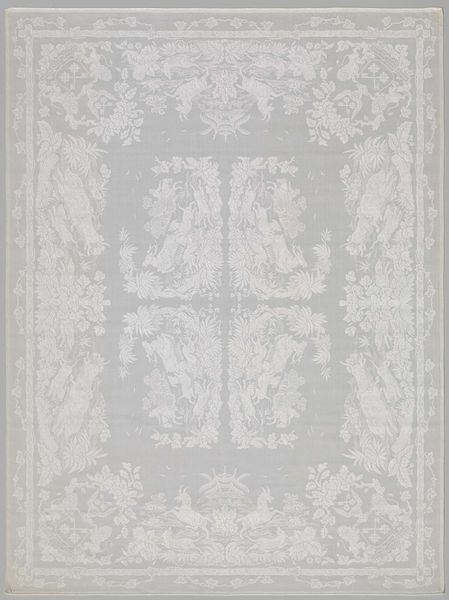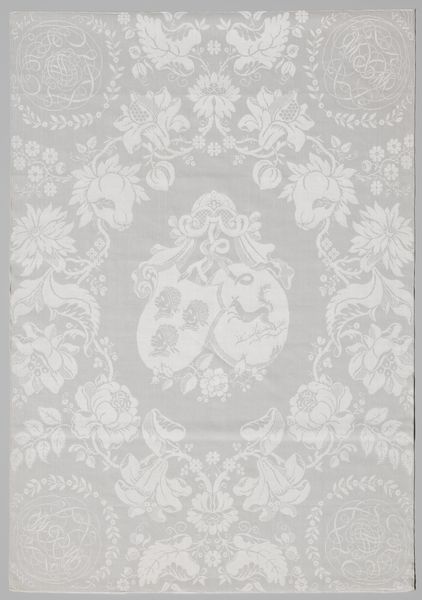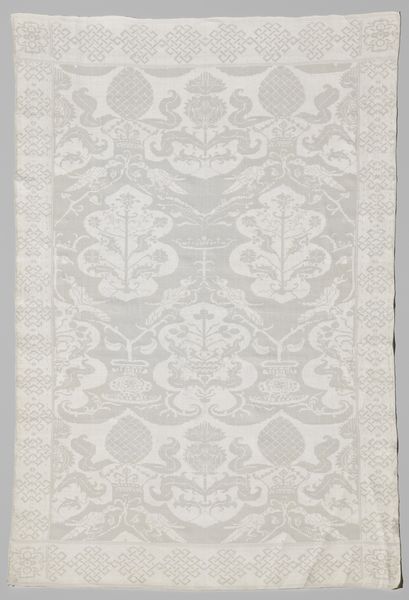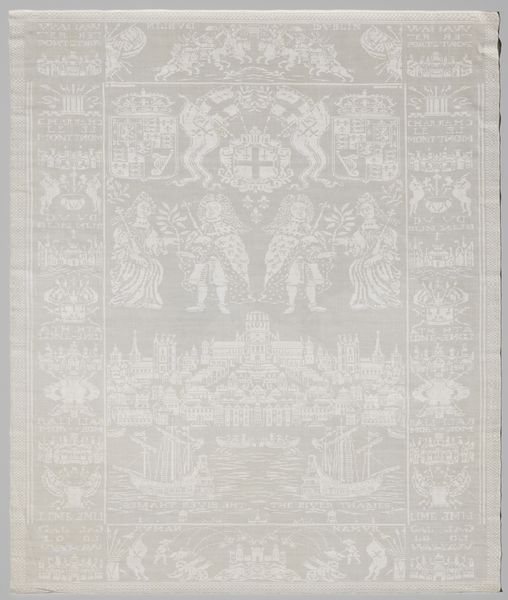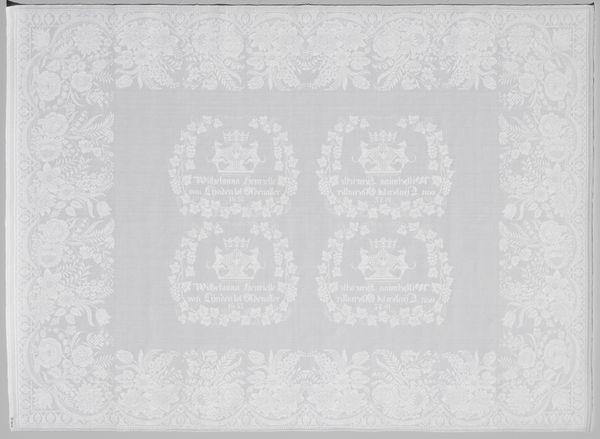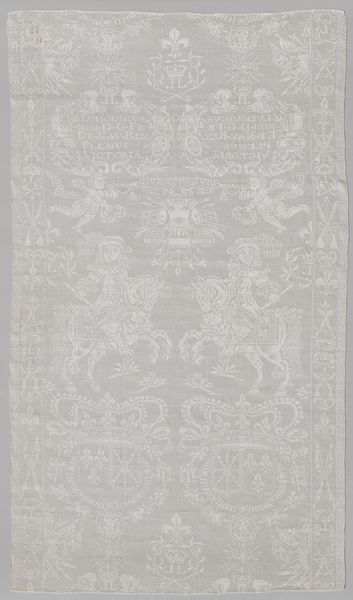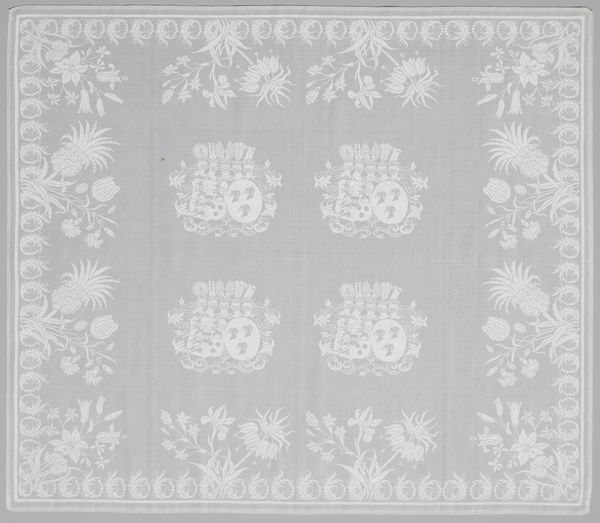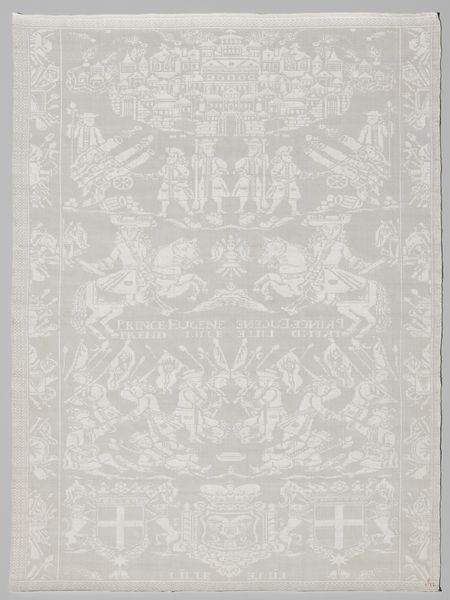
weaving, textile
#
natural stone pattern
#
rippled sketch texture
#
narrative-art
#
baroque
#
weaving
#
textile
#
abstract pattern
#
organic pattern
#
fabric design
#
repetition of pattern
#
vertical pattern
#
pattern repetition
#
history-painting
#
imprinted textile
#
layered pattern
Dimensions: height 107 cm, width 80 cm
Copyright: Rijks Museum: Open Domain
This damask napkin commemorating the conquest of Landau by French troops is an artifact of war and national pride, made by an anonymous artist. Created during a time of shifting European power dynamics, this textile embodies the intersection of conflict, identity, and material culture. The imagery woven into the fabric depicts the French triumph, celebrating military strength and dominance. In the early modern period, textiles such as this were not merely functional, but served as potent symbols of status and political allegiance. The choice of a domestic object to represent a military victory brings the battlefield into the home, intertwining public and private spheres. Consider how the act of using this napkin might have felt – a daily, intimate reminder of national identity and military success. The material and design of the napkin, therefore, speak volumes about the values, power structures, and emotional landscape of its time.
Comments
No comments
Be the first to comment and join the conversation on the ultimate creative platform.
